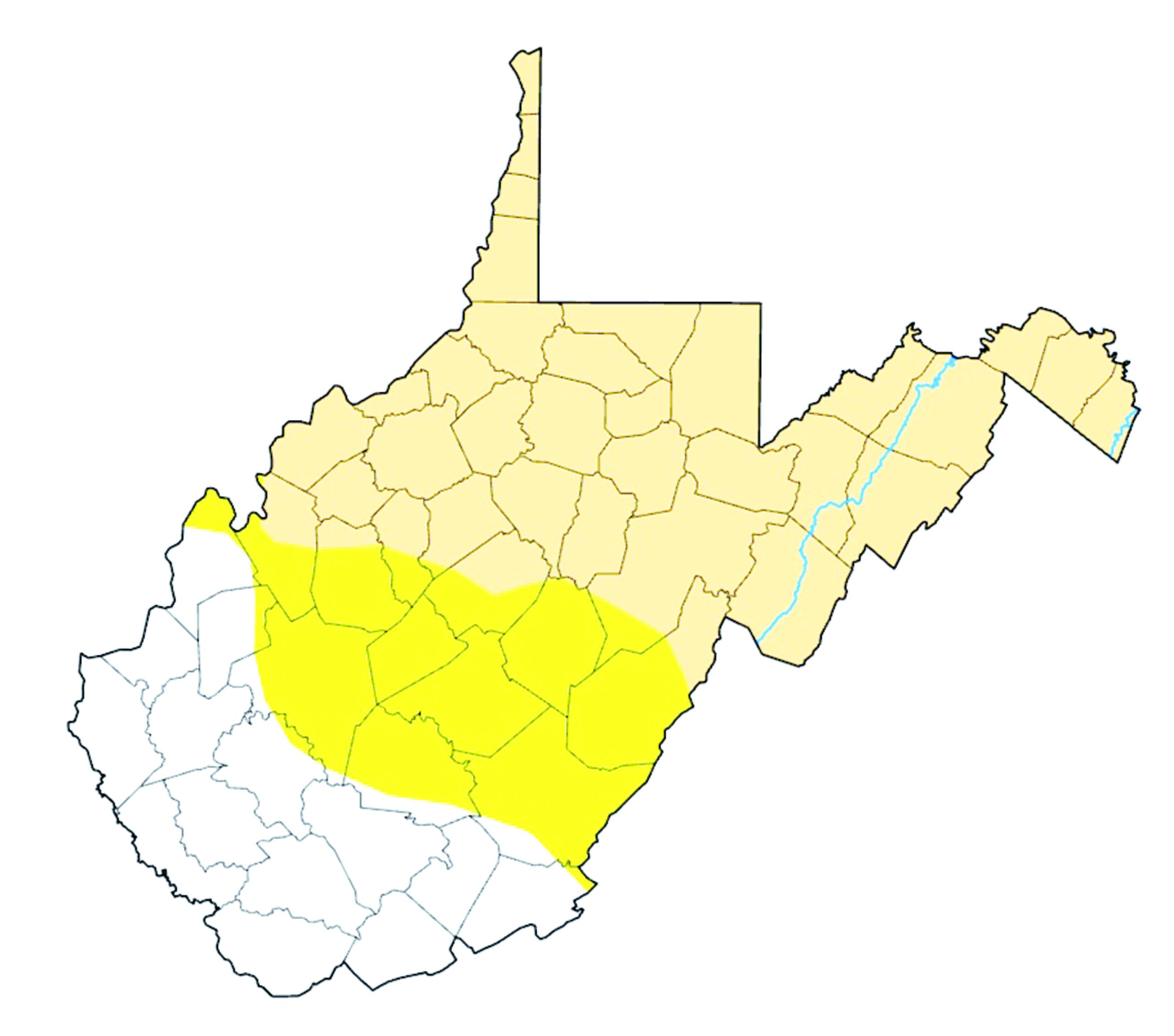Last week, Kent Leonhardt, the West Virginia Commissioner of Agriculture, suggested that the Eastern Panhandle and Potomac Highlands of West Virginia had fallen into drought conditions, regardless of official designation.
Now, the United States Drought Monitor, based at the University of Nebraska at Lincoln, agrees with him.
As of June 15, the US Drought Monitor categorized almost half of West Virginia as enduring a “moderate drought.” The boundary of the drought region runs from Ravenswood on the Ohio River eastward to northern Pocahontas County.
The same monitor placed a band of central West Virginia counties from the western edge of Kanawha to the Virginia line in the “abnormally dry” category.
The U.S. Drought Monitor recognizes five categories from a zero indicating normal or wet conditions through D4, which refers to “exceptional drought.”
Pendleton County’s moderate drought status carries with it recommendations from the National Weather Service, which says these conditions create “some damage to crops, pastures, fire risk high, streams, reservoirs, or wells low, some water shortage developing or imminent, voluntary water use restrictions requested.”
Other regions of the country, particularly Nebraska and Kansas, are seeing the worst possible conditions with an “exceptional drought.” This could cause widespread crop failures in some of the most productive farmland in the United States if conditions do not improve.
Although drier than normal, much of West Virginia has enjoyed temperatures cooler than most years. The average June temperature for the monitoring station at Moorefield last month was 62 degrees while the National Centers for Environmental Information report that Pendleton County’s average temperatures for the past three Junes were approximately 66 degrees.
The United States Department of Agriculture National Agricultural Statistics Service reports showed that approximately 80 percent of West Virginia’s topsoil moisture for the week ending June 11 was “short” or “very short.” Last year in the same week, top soil moisture was rated as a combined 95 percent mostly adequate, but also some surplus.
The same report also provided an outlook for key crops and livestock, including apples, peaches, hay, winter wheat, pasture, cattle/calves, and sheep/lambs. Conditions for the vast majority of those engaging in these activities remain between fair and very good, according to the USDA.
According to the National Weather Service, the Potomac Highlands will need approximately six to nine inches of rain to relieve drought conditions. Fortunately, this week starting on Monday and extending through at least the 26th should bring daily rains to help relieve farms and streams.



